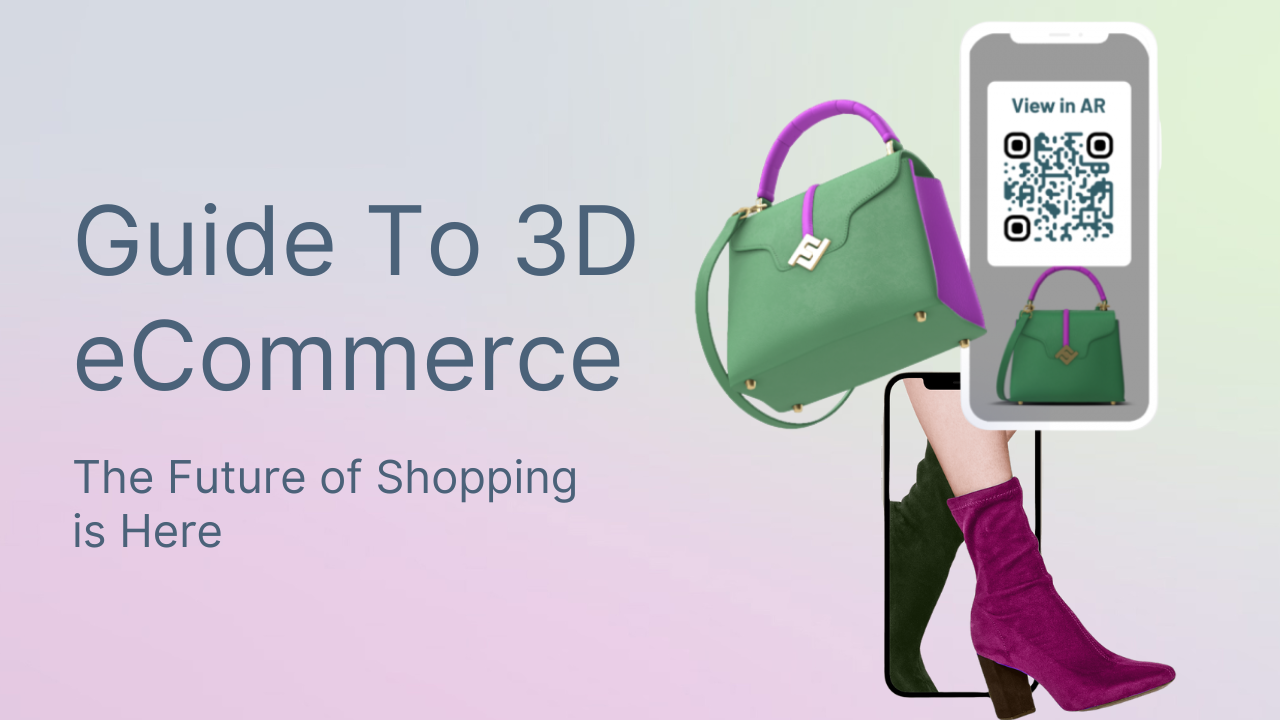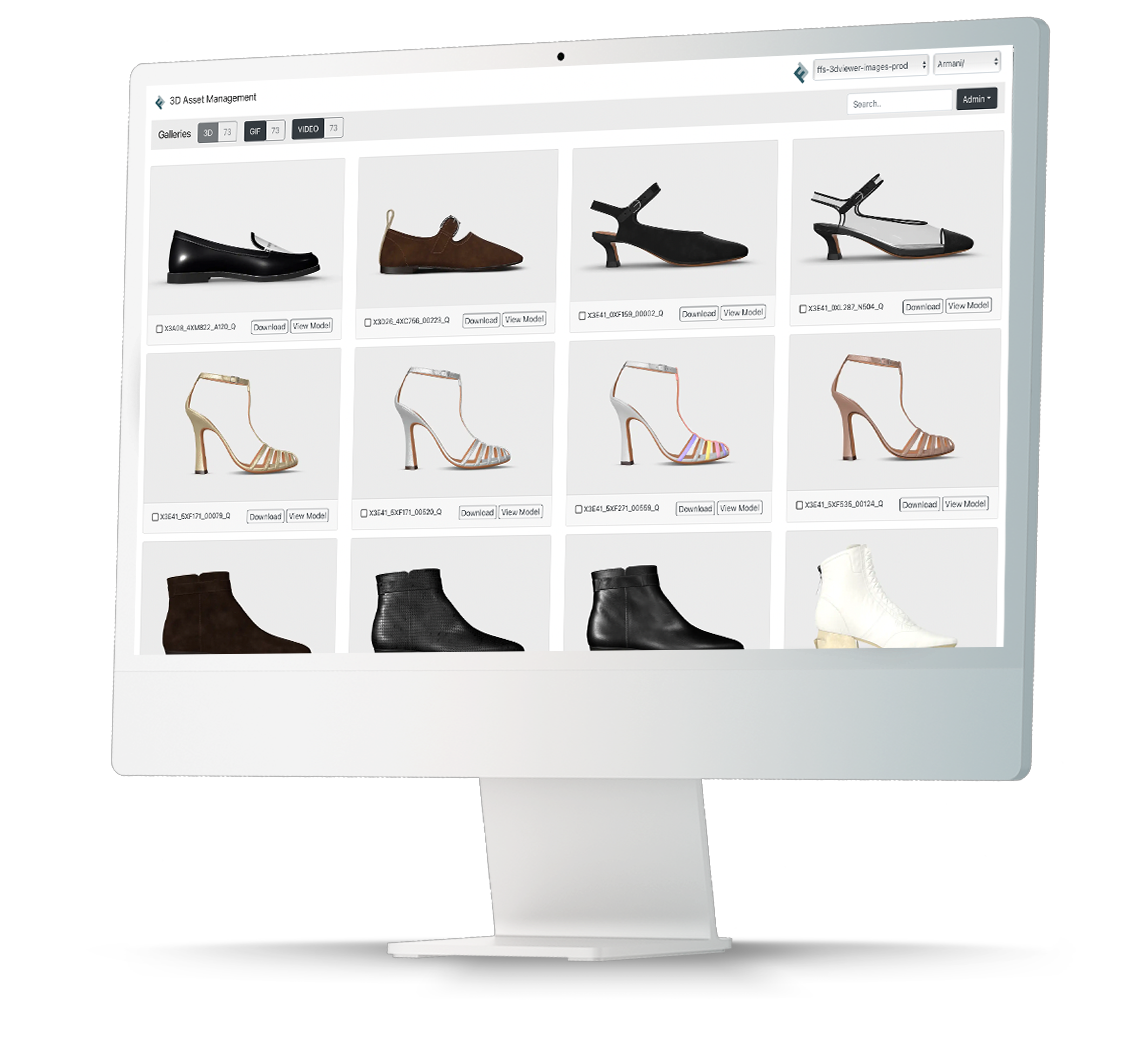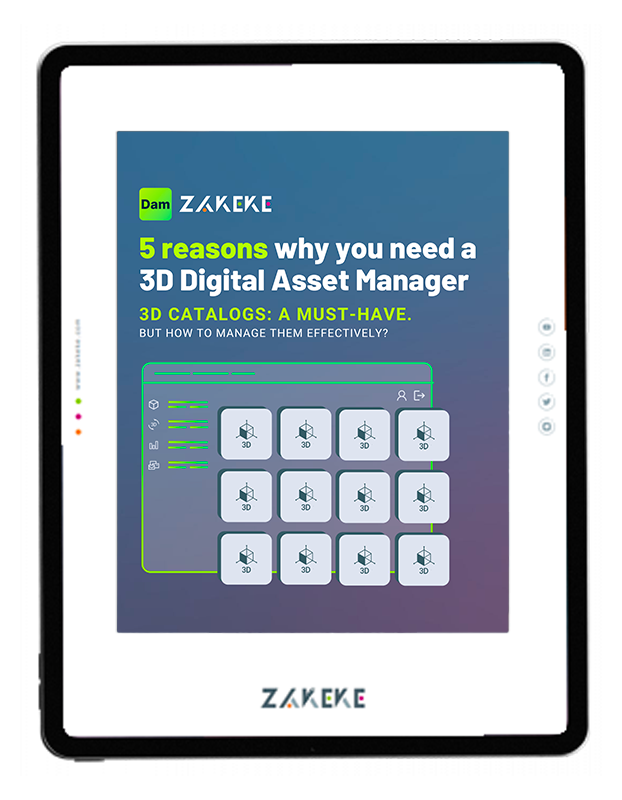The way of shopping is changing. From in-store purchases, we moved on to online purchases. The rapid development of new technologies affects the way customers shop. Customers prefer to shop online, within a few seconds. However, the online experience must be high quality: customers are looking for immersive and innovative shopping experiences that are no less than the in-store experience.
This is where a range of new technologies come into play, allowing merchants to enhance their store’s experience: just think about 3D visualization. Welcome to the world of 3D eCommerce, now an established trend that all merchants should embrace to keep up and stand out. Let’s dive deep into the topic.
What is 3D Commerce? The Definition
3D eCommerce is the new way of shopping. Here 3D models integrate with augmented and virtual reality experiences to show the customer a graphic and interactive representation of the product. It is a pleasant consequence of visual commerce.
Most online buyers base their choices on graphical representation. 3D technology allows customers to get in touch with the product, exactly as it happens in-store. It offers a new way to interact with products. Customers can view them from any angle, rotate them, zoom in and so on. They can do everything they would do in real life.
It is a bridge between in-store experience and online shopping. Customer engagement and interactivity are not the only aspects positively influenced by 3D models. It has been shown it increases eCommerce conversion rates and sales.
3D is the (current) future of eCommerce. Before there was shopping. Then came the Internet and online shopping. Now is the time for 3D eCommerce.
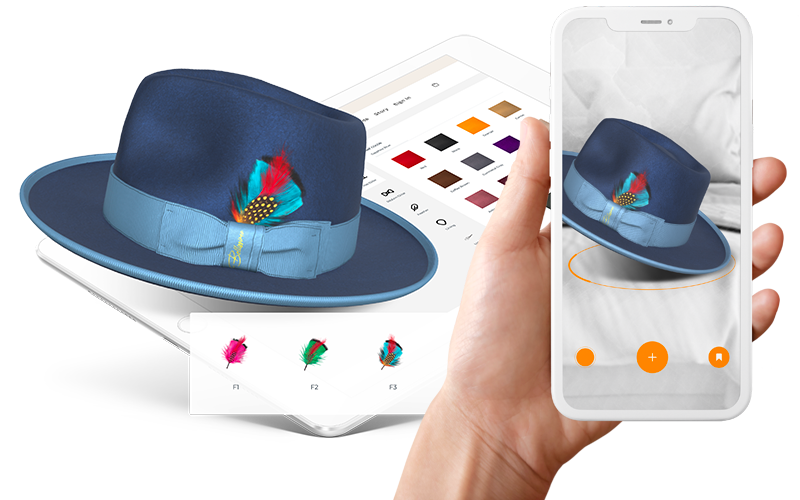
Moving from simple product photos to high-quality three-dimensional models is a trend retailers cannot ignore. This is especially true if market research reveals that consumers prefer to interact with 3D models, even through augmented reality technology. A study by Shopify reveals conversion rates increase by up to 250% on product pages with 3D models and AR technology.
The Importance of 3D Models: Challenges & How-To
The first step to embracing the world of 3D eCommerce? Naturally, having 3D models! And how does one create 3D models of their products? How to turn 2D images into photorealistic 3D models?
There are three ways to create 3D images:
- Photogrammetry: this technique combines overlapping images of the product from any angle. A specific software combines photos taken by a digital camera to reconstruct the 3D model of the object;
- 3D Scan: a scanner scans the shape and dimensions of objects, down to the smallest detail, putting millions of points together to create a dense vector point cloud;
- 3D rendering: this technique refers to the manual creation of a model by a 3D artist. It is not necessary to have the object in your hand. The designer can use digital prototypes and other data to recreate the 3D model.
According to Deloitte, many retailers have found a surprise benefit to investing in 3D models of their products: significant cost reductions for product catalogs and prototyping, compared to using physical models and photography. Accordingly, there is a raising demand in remote 3D artists positions.
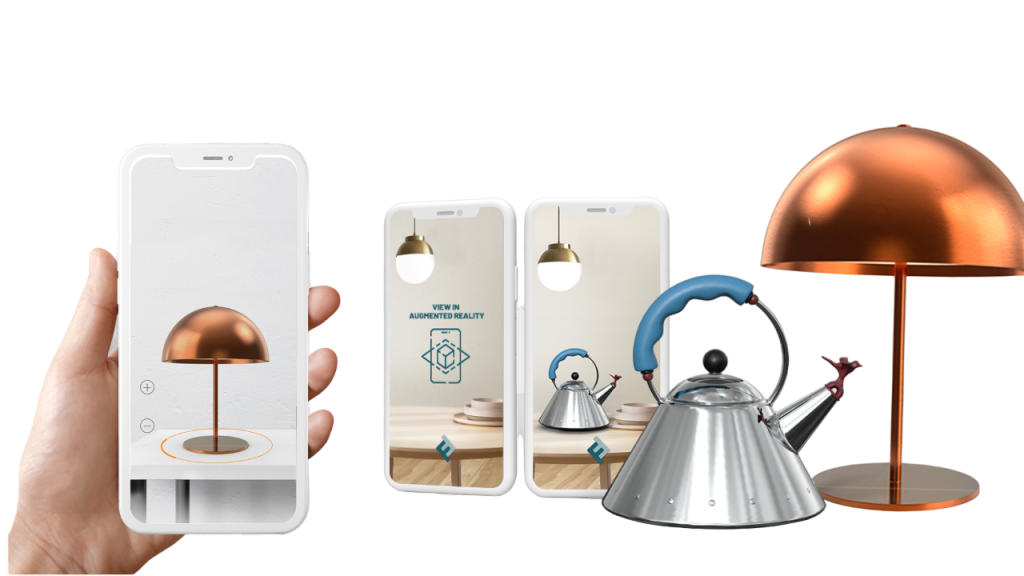
For making high-quality 3D models, you need to allocate financial and human resources if you want to manage the entire process internally. However, you may not have all the required skills and resources. That’s where a SaaS company comes into play.
In this case, a tool like Zakeke can assist you. We offer a 3D Digital Asset Manager, a centralized platform for easy creation, storage, management, and collaboration on 3D assets. Businesses can transform 2D images into 3D, manage large 3D catalogs, and make bulk changes efficiently. It also supports creating 3D GIFs and videos for marketing, seamlessly integrating assets across channels, all with no need for IT expertise. Making 3D accessible for all, what more could you ask for?
Why is 3D eCommerce Important?
In a recent report, Deloitte wrote: “The pandemic rapidly changed our behavior toward online channels, and the shifts were evident. While many companies were challenged to survive in the short-term, the crisis also presented an opportunity; bold companies that invested ambitiously and timely in their online business were likely to emerge as market leaders. Companies that invested courageously and timely in pivoting their businesses toward the behavioral changes were able to capture market share and emerge as market leaders post-pandemic.”
By 2026, multi-generational consumer groups will demand a 3D retail experience. The spread of the Internet and smartphones with Augmented Reality capabilities will lead customers to completely abandon traditional shopping in future. This is one of the reasons why you should choose 3D eCommerce today.
What is the first thing you do when you walk into a store? Looking at a product. It is the same in online stores. Humans are oriented by sight. 90% of the information the brain processes is visual. The higher the quality of the image, the higher the conversion rate and customer satisfaction will be.
Whatever business you’re carried out, the fixed point is always the customer with his wishes and needs. According to Marketing Land, internet users expect to find more and more images in the product sheet of an e-commerce. If until three years ago people were settled for an average of three product images, today the number is eight. This means that people are increasingly looking for eye contact with what they want to buy online.
Eye contact is even more important online, as the senses of touch, taste and smell are absent. Visual content works best for remembering. People tend to remember 80% of what they see or do versus only 10% of what they hear and 20% of what they read. 67% of consumers say high-quality visual content is more important than product description or customer ratings.
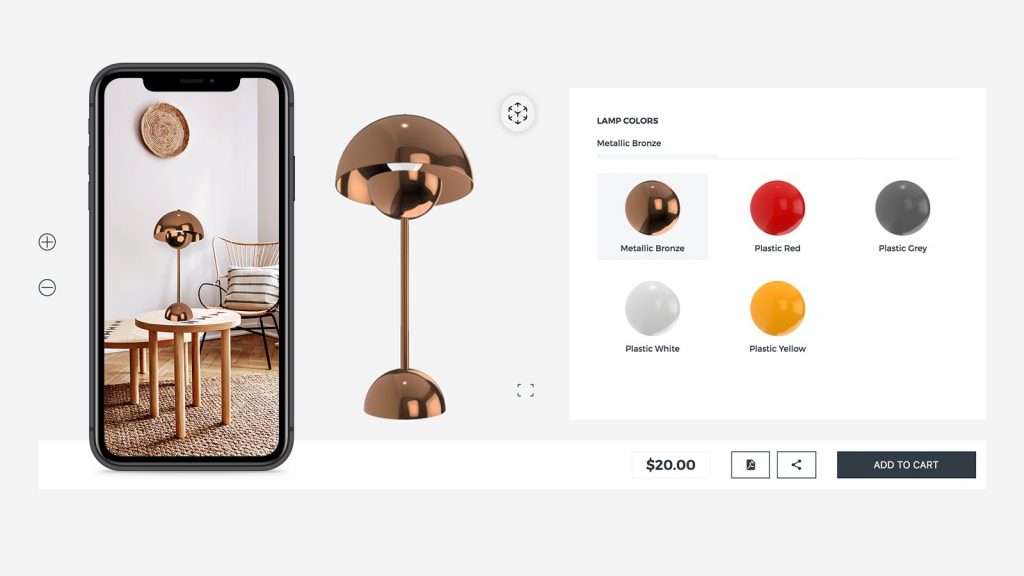
What Are The Benefits of 3D Models for eCommerce?
What are the key benefits of 3D online shopping?
- Enhanced Product Showcase: 3D online shopping allows for a much more dynamic and interactive product presentation. Customers can explore products from every angle, zoom in on details, and even see the item in different environments or settings. This level of detail and interactivity significantly enriches the shopping experience, helping customers make more informed decisions;
- Fewer Product Returns: Since customers have a better understanding of the product through 3D visualization, the likelihood of mismatched expectations decreases, leading to fewer returns. This not only saves costs but also reduces the logistical and environmental impact of return processes;
- More Time on Product Page & More Engagement: 3D visuals captivate users, encouraging them to spend more time interacting with the product page. This increased engagement can lead to higher conversion rates, as customers feel more confident and connected to the product they are considering;
- Less Physical Samples and Photoshoots, More Sustainability: By utilizing 3D models, brands can drastically reduce the need for physical samples and traditional photoshoots. This not only cuts down on production costs but also significantly reduces the environmental footprint associated with manufacturing sample products and unsold stocks;
- High-Quality Marketing Assets: 3D models can be repurposed across various marketing channels, from social media to interactive displays in physical stores. These high-quality assets not only provide a consistent and immersive brand experience, enhancing brand recall and customer loyalty, but they also allow customers to engage in a 360-degree products view.
3D Shopping Experience: All The Applications
What can you really do with 3D commerce? Here are some ideas:
- 3D Product Visualization: Showcasing every detail of the product in the highest quality;
- Making the Experience Interactive: Allowing to play with the products thanks to 360° product views;
- Placing Products in Customers’ Real Spaces with Augmented Reality;
- Allowing Customers to Try-On Products Virtually with Virtual Try-On for e-commerce that leverage 3D models;
- Making Your Products Customizable in 3D in Real-Time;
- Create 3D assets for your marketing campaigns and leverage the immersive power of 3D advertising;
- Digital Product Showrooms with your 3D models;
- Immersive Experiences in the Metaverse.
And these are just a few ideas, are you ready to embrace the 3D revolution?
Best Product Categories for 3D eCommerce
3D and AR shopping is not just seeing an object in your room but being able to view every single detail. For example, the size can be the most important point for a piece of furniture, while the brightness of the color for a dress.

Credit – Deloitte
Although some products are perfect for 3D eCommerce, it can fit any product category:
- Home goods and furniture: 3D and AR are becoming a standard in the furniture industry and customers expect retailers to deliver this virtual shopping experience. Home goods can be customized by changing colors, patterns and styles and AR & 3D furniture are today a must-have for brands in this field;
- Beauty and make-up: convincing customers to change their look is not so easy and AR and 3D can convince them during purchasing process. Indeed, L’Oréal AR makeup experiences conversion rates tripled conversions;
- Automotive: As with furniture, the customization options can be potentially endless. AR sales experiences help to show all the characteristics of a vehicle, often not tangible even in dealerships;
- Shoes: In this category 3D and AR functions include both personalization and virtual try-on. The Made-To-Order services create the right synergy between virtual and real, making the product unique with details that cannot be found elsewhere, like engraving your name on the sole.
Zakeke: All The 3D Possibilities in One Place
If you think that entering the world of 3D eCommerce is expensive and exclusively accessible to big brands, think again. There are platforms, just like Zakeke, that allow even small brands to leverage the latest technologies to emerge and improve their results.
What should you know about Zakeke? It’s a single platform containing an array of tools all dedicated to the 3D eCommerce world, aimed exclusively at improving the Customer Experience for clients and enhancing results for merchants. The best part? Smooth no-code integration with all e-commerce platforms, simple plug & play.
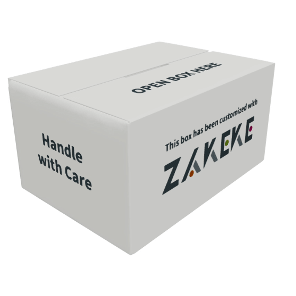
Here’s a little overview of all the tools inside Zakeke, so you can see how it unlocks the world of 3D commerce:
-
Visual Product Customizer: Enables product personalization by allowing customers to add custom text, images, and designs in real-time. It simplifies internal design processes by providing print-ready files, making it easy for businesses to offer unique products without overburdening their teams.
-
3D Product Configurator: Provides an immersive, personalized shopping experience, letting customers design products with options for elements, colors, and materials within set rules. It’s user-friendly, with no need for coding or 3D design skills.
-
3D & AR Viewer: Brings products to life through 3D visualization and Augmented Reality, allowing seamless sharing of 3D models on any platform with a simple link or QR code. Customers can interact with products in real-time, enhancing their shopping experience.
-
Virtual Try-On: Offers a virtual try-on experience for customers on any device, using AI for a perfect fit. It combines live customization with virtual testing, increasing customer confidence and reducing returns.
-
3D Asset Manager: A centralized platform for creating, storing, managing, and collaborating on 3D assets. It allows for the transformation of 2D images into 3D, efficient management of large 3D catalogues, and supports the creation of 3D GIFs and videos for marketing.
Want to so start now? 14-day free trial for you or a quick 10-min demo with our experts.


